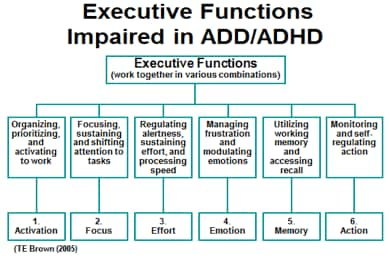
Managing Frustration and Modulating Emotions.Regulating Alertness, Sustaining Effort and Processing Speed.Focusing, Sustaining and Shifting Attention to Tasks.Organizing, Prioritizing and Activating to Work.Clusters of executive functions assessed include: The Brown ADD Scales go beyond measures that address only hyperactivity to assess for less apparent impairments of executive functioning. Interpret and link performance with IQ and other assessment data, including integrations with WAIS-III and WISC-III.Administer any of 40 to 50-item efficient screening instruments in just 10 to 20 minutes.



Comprehensive diagnostic interviews not only evaluate diagnostic criteria, but also assess different psychopathological syndrome scores, functional disability measures, indices of pervasiveness and information about comorbid disorders. This makes the instruments useful to follow the course of the disease quantitatively. Both self rating scales and observer report scales quantify the ADHD symptoms by use of a Likert scale mostly ranging from 0 to 3.

The Brown ADD Rating Scale (Brown ADD-RS) and the Attention Deficit Hyperactivity Disorder-Other Report Scale (ADHD-OR by Rösler et al.) are instruments for use by clinicians or significant others. The CAARS and the CSS have other report forms too. or the Attention Deficit Hyperactivity Disorder-Self Report Scale (ADHD-SR by Rösler et al.) are self report rating scales focusing mainly on the DSM-IV criteria. The Connors Adult ADHD Rating Scales (CAARS), the Current Symptoms Scales by Barkley and Murphy (CSS), the Adult Self Report Scale (ASRS) by Adler et al. The Wender-Utah Rating Scale (WURS) and the Childhood Symptoms Scale by Barkley and Murphy try to make a retrospective assessment of childhood ADHD symptoms. This article reviews rating instruments that have found general acceptance. In order to obtain a systematic database for the diagnosis and evaluation of the course ADHD rating scales can be very useful. The diagnosis of attention-deficit hyperactivity disorder (ADHD) in adults is a complex procedure which should include retrospective assessment of childhood ADHD symptoms either by patient recall or third party information, diagnostic criteria according to DSM-IV, current adult ADHD psychopathology including symptom severity and pervasiveness, functional impairment, quality of life and comorbidity.


 0 kommentar(er)
0 kommentar(er)
